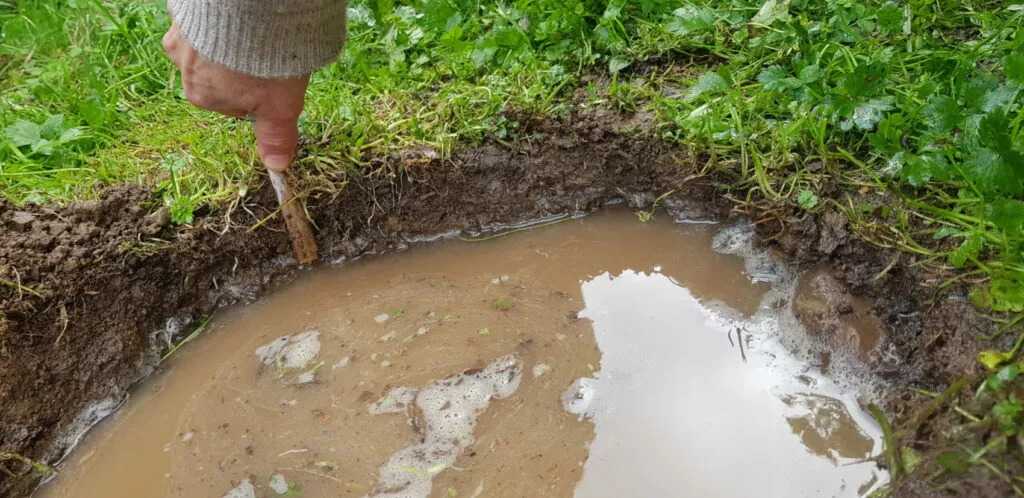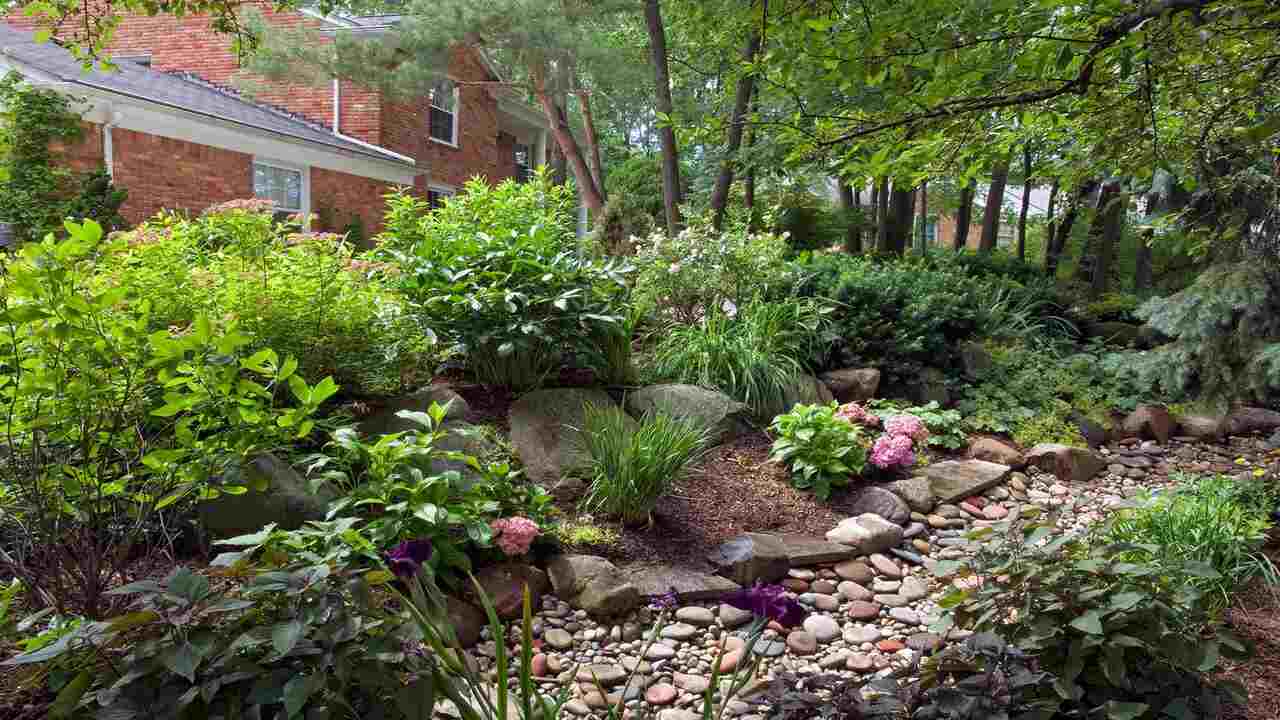Creating a rain garden for natural water absorption is a fantastic way to help the environment and beautify your space. And when it comes to getting the right plants, Liberty Heritage Nursery Farm is a great place to start!First, choose a location with good drainage, like a slightly sloped area. Then, select native plants that can handle both wet and dry conditions. Dig a shallow basin, add compost or mulch for water retention, and plant your chosen species. Finally, maintain your garden by watering during dry spells and removing weeds as needed. With Liberty Heritage Nursery Farm’s expertise and your dedication, your rain garden will thrive while helping to protect local water sources.
Understanding Rain Gardens
Before diving into the specifics of creating a rain garden, it’s essential to understand what exactly a rain garden is and why it’s beneficial. A rain garden is a planted depression in the landscape that is designed to capture and absorb rainwater runoff from roofs, driveways, sidewalks, and other impermeable surfaces.
When it rains, water often flows over these surfaces, picking up pollutants like oil, pesticides, and fertilizers along the way, and ultimately ending up in storm drains and water bodies. This runoff can contribute to water pollution and erosion, negatively impacting aquatic ecosystems.
Rain gardens help mitigate these issues by allowing rainwater to infiltrate into the soil naturally. The plants in a rain garden help absorb excess water, filter out pollutants, and recharge groundwater supplies. Additionally, rain gardens can reduce flooding and erosion while providing habitat for birds, butterflies, and other wildlife.
Now that we understand the importance of rain gardens let’s move on to the practical steps of creating one.
Site Selection
Select a site with good water flow and adequate sunlight, at least 10 feet from buildings. Assess soil drainage and composition. Consider hardscaping services for adding features like rock borders or retaining walls to enhance the rain garden’s functionality and aesthetics. Collaborate with experts for guidance on site selection, soil testing, and integrating hardscaping elements effectively into your rain garden design.
Ideally, the site should be slightly sloped to encourage water flow towards the rain garden. Avoid areas with underground utilities, septic systems, or areas prone to standing water.
Assessing Soil and Drainage

Next, assess the soil and drainage in the chosen site. Dig a small hole about a foot deep and observe how quickly water drains. Ideally, you want the water to infiltrate within 24 hours. If the water drains too quickly, the soil may be sandy and may need amendments to improve water retention. If it drains too slowly, the soil may be clayey, and you may need to improve drainage.
Designing the Rain Garden
When designing a rain garden, consider incorporating hardscaping trends tailored for small yards. Opt for space-saving features like vertical gardens, raised planters, or modular seating to maximize functionality without overwhelming the space. Collaborate with experts to explore innovative hardscaping ideas that complement your rain garden design and make the most of limited yard space, ensuring a beautiful and functional outdoor area.
Create a shallow basin with gentle slopes leading towards the center to encourage water to collect and infiltrate into the soil. You can outline the edges of the rain garden with rocks, logs, or other decorative elements to enhance its visual appeal.
Choosing Plants
Select low-maintenance plants suitable for Liberty Township’s climate when choosing plants for your rain garden. Incorporate hardscaping elements like stone pathways or decorative features to enhance the garden’s functionality and aesthetics. Collaborate with experts such as Liberty Heritage Nursery Farm for guidance on plant selection and hardscaping design to create a sustainable rain garden that requires minimal upkeep and complements the environment of Liberty Township.
Select a mix of grasses, wildflowers, shrubs, and trees to create a diverse and resilient ecosystem. Consider plants with varying heights and bloom times to provide year-round interest and support pollinators like bees and butterflies.
Some excellent plant choices for rain gardens include:
- Grasses:
Switchgrass (Panicum virgatum), Little Bluestem (Schizachyrium scoparium), and Prairie Dropseed (Sporobolus heterolepis).
- Wildflowers:
Black-eyed Susan (Rudbeckia hirta), Purple Coneflower (Echinacea purpurea), and Butterfly Milkweed (Asclepias tuberosa).
- Shrubs:
Buttonbush (Cephalanthus occidentalis), Redtwig Dogwood (Cornus sericea), and Inkberry Holly (Ilex glabra).
- Trees:
Red Maple (Acer rubrum), River Birch (Betula nigra), and Serviceberry (Amelanchier spp.).
Consult with local nurseries or gardening centers, such as Liberty Heritage Nursery Farm, to get recommendations on native plants that thrive in your area.
Planting and Mulching
Prepare the soil for planting by removing weeds and loosening compacted areas. Plant native species according to spacing and depth requirements. Water thoroughly after planting. Enhance moisture retention and weed suppression by applying mulch, such as shredded bark or wood chips. Consider consulting landscaping services for expert advice on plant selection, soil preparation, and mulching techniques tailored to your rain garden’s needs.
After planting, apply a layer of mulch around the plants to conserve moisture, suppress weeds, and prevent soil erosion. Organic mulches like shredded bark, wood chips, or compost are excellent choices.
Maintenance and Care
In Liberty Township, promptly detect and fix lawn drainage issues in your rain garden to maintain its health. Regularly inspect for signs like standing water or soil erosion. Address problems by adding soil amendments, installing drainage systems, or adjusting the garden’s grading. Consult with local experts such as Liberty Heritage Nursery Farm for specialized advice on detecting and fixing drainage problems early, ensuring your rain garden thrives and contributes positively to the environment in Liberty Township.
Watering:
Water newly planted rain gardens regularly until plants are established. After that, they should be able to survive on natural rainfall, but occasional watering during dry spells may be necessary.
Weeding:
Remove weeds regularly to prevent them from competing with your rain garden plants for nutrients and water.
Pruning:
Prune shrubs and trees as needed to maintain their shape and health.
Monitoring:
Keep an eye on the rain garden during heavy rain events to ensure that water is infiltrating properly and not causing erosion.
Fertilizing:
Generally, native plants in rain gardens don’t require fertilizers, as they are adapted to local soil conditions. However, if you notice signs of nutrient deficiency, you can apply a slow-release organic fertilizer.
Enjoying Your Rain Garden

Congratulations, you’ve successfully created a rain garden for natural water absorption! Sit back, relax, and enjoy the beauty of your garden while knowing that you’re making a positive impact on the environment by reducing water pollution and supporting local wildlife.Enjoy your rain garden by observing wildlife it attracts, like birds and butterflies. Relax in the peaceful ambiance created by the sound of rainwater trickling and the sight of vibrant plant life. Use the rain garden as a space for reflection, meditation, or outdoor gatherings with friends and family. Embrace the beauty and functionality of your rain garden while contributing positively to the environment.
FAQs
Where is the best place to put a rain garden?
The best place to put a rain garden is in a low-lying area of your yard where water naturally collects during rainfall. Choose a spot that is at least 10 feet away from your home’s foundation to avoid water seepage. Ensure the location receives adequate sunlight and has well-draining soil for optimal rain garden performance.
What is the substrate for a rain garden?
The substrate for a rain garden typically consists of a mix of soil, compost, and organic matter. It should have good water retention properties while also allowing for adequate drainage to prevent waterlogging. Incorporating materials like sand or gravel can help improve drainage and create a healthy substrate for rain garden plants.
What are the layers of the rain garden?
A rain garden typically consists of three main layers: the planting layer, the filter layer, and the storage layer. The planting layer is where native plants are rooted and helps with water absorption. The filter layer, made of porous materials like sand or gravel, filters out pollutants before water percolates into the storage layer, which holds excess water until it can infiltrate into the soil.
How to build a rain garden in Ontario?
To build a rain garden in Ontario, start by selecting a location with good water flow and well-draining soil. Create a shallow basin with gentle slopes, then add a mix of native plants suited to Ontario’s climate. Finally, incorporate mulch and hardscaping elements as needed to enhance water retention and aesthetics, ensuring proper maintenance for long-term success.
How do you make a rain cover for plants?
To make a rain cover for plants, start by selecting a lightweight, waterproof material like clear plastic or a specialized garden fabric. Cut the material to size, leaving enough room for the plants to grow comfortably underneath. Secure the rain cover over the plants using stakes or clips, ensuring it provides adequate protection while still allowing for air circulation.
Conclusion
In conclusion, creating a rain garden for natural water absorption is a rewarding and eco-friendly endeavor. By following these steps and incorporating native plants, you can create a beautiful and functional garden that conserves water, improves soil health, and supports biodiversity. Happy gardening!
